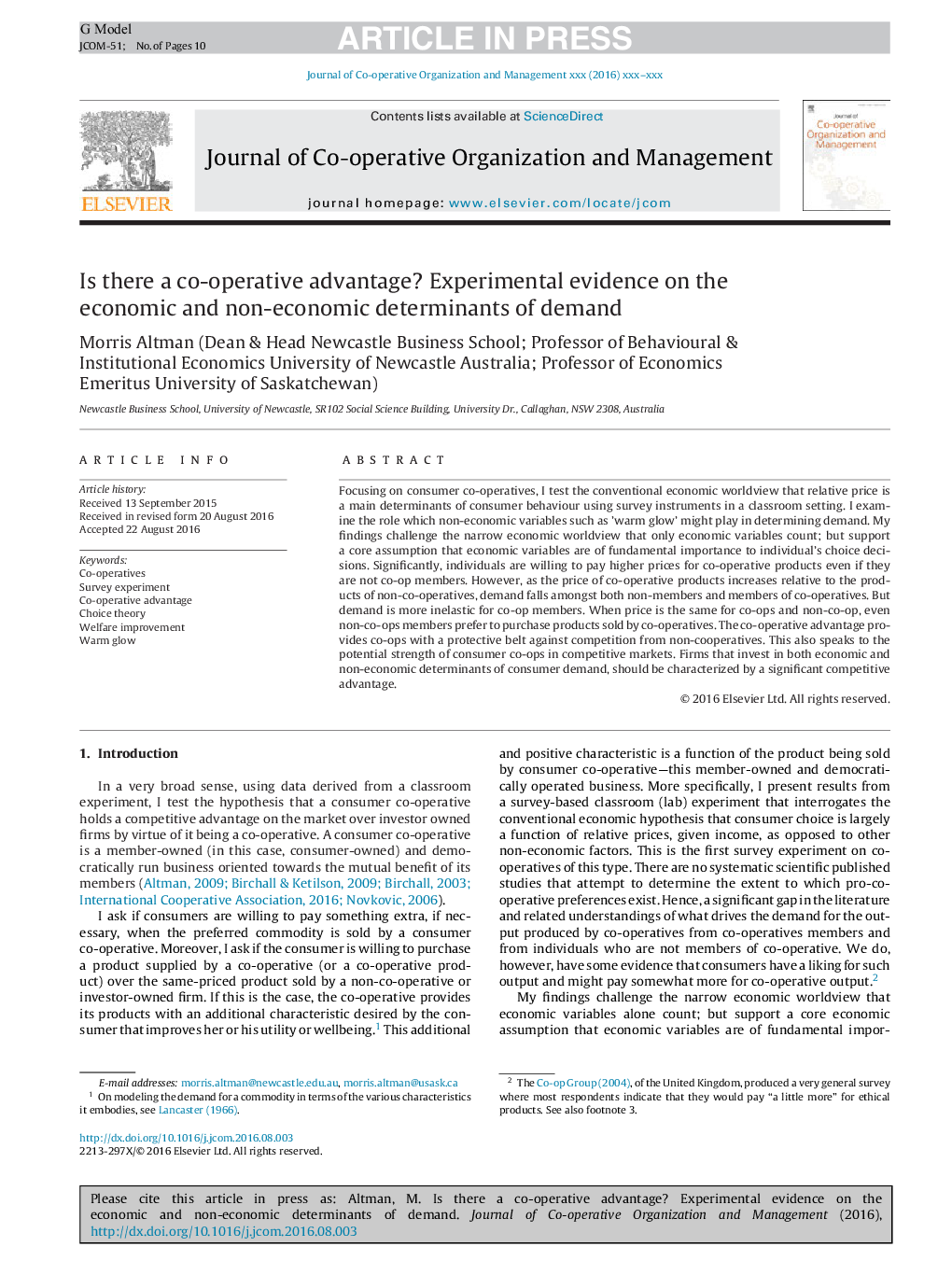| Article ID | Journal | Published Year | Pages | File Type |
|---|---|---|---|---|
| 5110043 | Journal of Co-operative Organization and Management | 2016 | 10 Pages |
Abstract
Focusing on consumer co-operatives, I test the conventional economic worldview that relative price is a main determinants of consumer behaviour using survey instruments in a classroom setting. I examine the role which non-economic variables such as 'warm glow' might play in determining demand. My findings challenge the narrow economic worldview that only economic variables count; but support a core assumption that economic variables are of fundamental importance to individual's choice decisions. Significantly, individuals are willing to pay higher prices for co-operative products even if they are not co-op members. However, as the price of co-operative products increases relative to the products of non-co-operatives, demand falls amongst both non-members and members of co-operatives. But demand is more inelastic for co-op members. When price is the same for co-ops and non-co-op, even non-co-ops members prefer to purchase products sold by co-operatives. The co-operative advantage provides co-ops with a protective belt against competition from non-cooperatives. This also speaks to the potential strength of consumer co-ops in competitive markets. Firms that invest in both economic and non-economic determinants of consumer demand, should be characterized by a significant competitive advantage.
Related Topics
Social Sciences and Humanities
Business, Management and Accounting
Business and International Management
Authors
Morris (Dean & Head Newcastle Business School; Professor of Behavioural & Institutional Economics University of Newcastle Australia; Professor of Economics Emeritus University of Saskatchewan),
